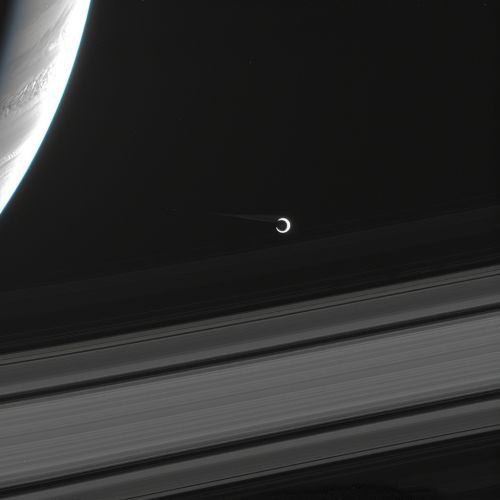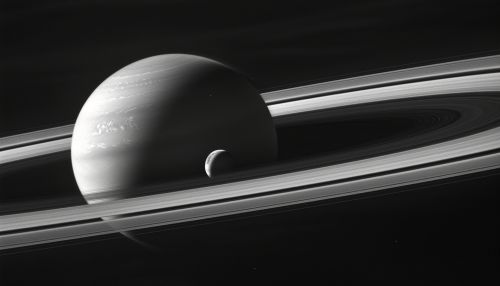Encke Gap
Overview
The Encke Gap is a prominent division within the A ring of Saturn, named after the German astronomer Johann Franz Encke, who first observed it in the 19th century. This gap is home to the moon Pan, which orbits within it and is responsible for keeping it clear of other particles.


Discovery
The Encke Gap was first observed by Johann Franz Encke in the 19th century, making it one of the earliest observed features of Saturn's rings. Encke's observations were made using a small refracting telescope, and his discovery of the gap was a significant contribution to the study of planetary rings.
Characteristics
The Encke Gap is approximately 325 kilometers wide and is located about 133,590 kilometers from Saturn's center. It is part of the A ring, which is the outermost of the large, bright rings visible from Earth. The gap is kept clear by the gravitational influence of the moon Pan, which orbits within it.
Pan
Pan, the moon that orbits within the Encke Gap, is a small, walnut-shaped moon that is only about 28 kilometers in diameter. Despite its small size, Pan's gravity is sufficient to clear the gap of other particles. This process is known as shepherding, and Pan is one of only a few moons in the solar system known to perform this role.
Observation and Study
The Encke Gap and Pan have been the subjects of extensive observation and study, both from Earth-based telescopes and from spacecraft visiting Saturn. The Cassini-Huygens mission, in particular, provided detailed images and data about the gap and its resident moon.
Significance in Planetary Science
The study of the Encke Gap and Pan has provided valuable insights into the dynamics of planetary rings and the role of shepherd moons. These findings have implications for understanding the formation and evolution of planetary systems, both in our own solar system and around other stars.
